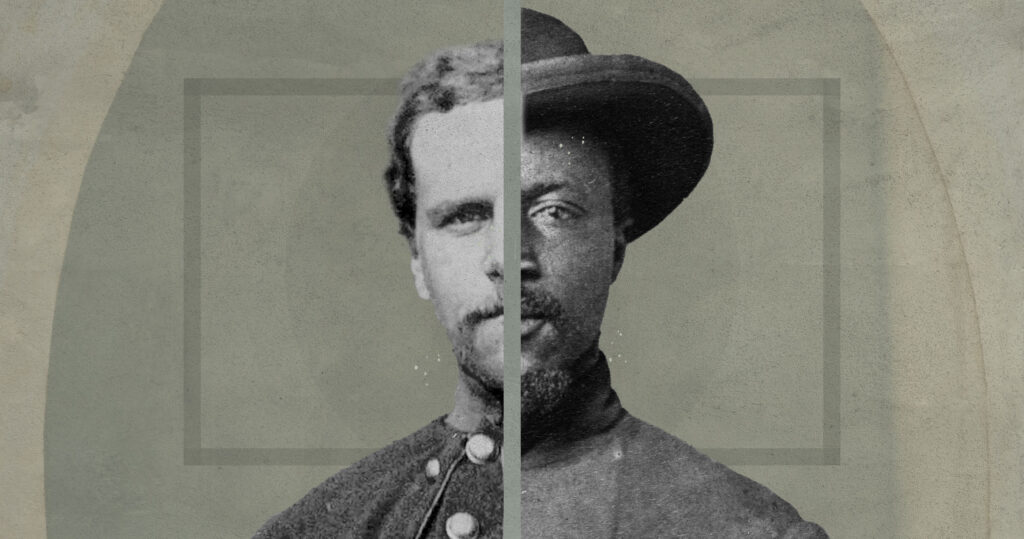Grimké’s Very important Attraction to the Doctrine of God’s Picture within the Publish-Civil Battle South

Private Identification
Francis Grimké’s understanding of non-public id drew deeply from his conviction that each one human beings are created within the picture of God and due to this fact worthy of equal honor and respect. The fantastic thing about God’s picture in all humanity was one of the crucial frequent themes in each his public writings and his private reflections. On the identical time, he additionally noticed the advantages of familial and ethnic ties. Such relationships, he argued, additionally might contribute positively to a private sense of self.
The truth is, Grimké taught that the formation of a wholesome self-concept calls for that individuals maintain on concurrently to each the common and the actual elements of their id. Self-respect and contentment rely on a powerful sense of self formed by a dedication to the human race as an entire and likewise working for the nice of 1’s ethnic and familial neighborhood. The 2 should go collectively. Whereas Grimké believed that exact obligations to household and neighborhood maintain a particular place, particularly for the oppressed, he additionally refused to put these obligations in stress with extra common obligations. All through his life and ministry, he remained dedicated even to the nation that oppressed him and the denomination that marginalized him. But these identical commitments crucially enabled the sort of righteous discontentment that might gasoline the perseverance essential to impact long-term social change within the face of in any other case discouraging circumstances.
God’s Picture
The 12 months 1899 in some ways marked the start of a interval of unprecedented prosperity and affect for america on the worldwide stage. The US Senate ratified the Treaty of Paris in February of that 12 months, which introduced a proper finish to the Spanish-American Battle. But, simply because the Black troopers have been clipped out of pictures within the press tales depicting Teddy Roosevelt’s victory, Grimké apprehensive that the “strained relations” between the races within the South mirrored unacceptable attitudes on the a part of White individuals towards Black individuals.1 In June of that 12 months he gave an handle through which he appealed to the picture of God as the inspiration for understanding human id.2
Born enslaved, Grimké devoted his life to preaching the gospel and confronting the injustice of his time. This ebook presents Grimké’s imaginative and prescient of the Christian life, serving to readers handle necessary points throughout the church as we speak.
In that handle, Grimké lamented that southerners considered Black individuals as their inferiors, and he known as upon individuals to deliver their views according to the instructing of Scripture. As he put it, “In accordance with this ebook, which we obtain because the phrase of God, the one infallible rule of religion and apply, God ‘hath made of 1 blood all nations of males’ [Acts 17:26].” All individuals share the identical blood, and this actuality displays the instructing of Genesis that God created all human beings in his picture. Subsequently, there “isn’t a touch or suggestion” of, and even something that might be “twisted” into an argument for, the prevalence of 1 race over one other. Grimké rejected the try of southern Whites to make such an argument in “coping with the race query.”3
After laying this basis, he proceeded to attach the picture of God to each the regulation and the gospel. If all individuals have been created in God’s picture, then the identical “ethical commonplace” applies to all races. The Ten Command ments, the Sermon on the Mount, and Paul’s instructing on the centrality of affection in 1 Corinthians 13 apply equally to all. Much more importantly, the gospel “plan of salvation” is similar for all of God’s individuals. Folks of “all races stand upon exactly the identical footing.” All are “invited,” and, equally, all are “equally welcomed.” The apostles have been directed to disciple all nations. Citing Galatians 3:28, Grimké drew the apparent conclusion that “the identical gospel is to be preached to all.” Drawing from the parable of the nice Samaritan, he identified that if each the identical ethical requirements and the identical gospel message are for all individuals, then it’s not sufficient for “white males to deal with white males as they wish to be handled” or “black males to deal with black males as they wish to be handled.” As these created in God’s picture, all individuals stand in relation to all different individuals by the identical guidelines, and all individuals stand in determined want of the identical grace.4
Grimké utilized this twofold biblical affirmation of the equality of all individuals as regards to regulation and gospel to each temporal governance and evangelism. Relating to temporal considerations, he identified that the Declaration of Independence of america mirrored the biblical instructing that each one individuals “are created equal” and due to this fact “are endowed by their Creator with sure inalienable rights [sic].” The US Structure additionally mirrored these identical rules in guaranteeing to all its residents the suitable to vote. These paperwork echoed the biblical instructing, as Grimké put it, that “civil and political rights” needs to be shared equally by members of all races. The failures of america and of White southerners have been “opposite to the Phrase of God” and opposite to the “expressed provisions and declarations of the Structure.”5
This multifaceted temporal failure required multifaceted options, and one of the crucial necessary cures concerned schooling that wanted to be “social, political, ethical, and non secular.”6 Right here it is very important emphasize that this temporal concern wanted to be addressed each politically and religiously. Grimké rigorously distinguished these sides, however he additionally refused to separate them. He noticed that although editors and lecturers actually had a job to play, “ministers particularly” possessed a vital function as they proclaimed God’s ethical regulation. Ministers, of all individuals, have been conscious that racial failures in society and the mistreatment of Black individuals within the South have been “not in concord with the letter or spirit” of God’s phrase. Subsequently, Grimké wrote, “It’s their obligation to deliver the instructing of that Phrase to bear upon current circumstances, nevertheless unpopular it could be to take action.” Having handled the roles of ministers, he then went on to explain the roles of lecturers and editors, observing the wanted impact of those three forces working collectively.7
It is also necessary to emphasise that the function belonged to all Christians as members of the church and never simply to Christian ministers.
The household of Christ shares the identical Holy Spirit and due to this fact constitutes one united physique.
Along with “ministers, and elders, and deacons,” “members” additionally possessed an obligation to mannequin these rules for instance for others. The “Ten Commandments” and the “Sermon on the Mount” could also be options for the “race downside,” however they “should have in again of them a residing church—a church made up of women and men who’re keen to take them up, and put them on their hearts, and dwell them out.”8 The obligation belonged to all of the members of the church of their varied roles, and due to this fact Grimké might say that if the state of affairs within the South failed to enhance, the failure would largely belong to the church.9 Along with these temporal considerations, which belonged to believers and to unbelievers alike, and which needs to be addressed by means of the preaching of God’s ethical regulation by church leaders and thru the residing instance of church members, Grimké additionally utilized the doctrine of God’s picture to extra correctly religious considerations, together with evangelism. In 1916, he gave a provocative handle, subsequently printed and distributed within the type of a tract, delicate to the truth that “it’s now virtually not possible to get a matter like this into the [mainstream] non secular press.”10 Correct evangelism required the entire preaching of the regulation and the gospel. It additionally wanted course—particularly, the renewal of the individual evangelized. These created in God’s picture wanted the salvation of Jesus to be “renewed after the picture of Him that created” them.11
The failure to see all individuals as God’s picture bearers and the failure to pursue the renewal of all individuals in God’s picture by means of evangelism have been nothing lower than deadly to work of evangelism normally and the ministry of the Institute for Evangelism specifically. Such failures contributed to a type of evangelism that was not simply flawed however a hypocritical replica of false faith. As Grimké preached in opposition to such false evangelism, the doctrine of the picture of God formed his conception of the connection between regulation and the gospel and its software to each temporal and religious considerations.
Narrowing the image, Grimké additionally targeted his doctrine of the picture of God extra significantly on different necessary implications. In his wellknown 1910 handle “Christianity and Race Prejudice,” he emphasised the universally shared id of all human beings. God created all people in his picture, and in that sense all individuals have been created by the identical Father. So additionally, in that very same sense, all human beings are siblings. Although he rigorously taught the distinctive relationship of brothers and sisters in Christ, Grimké was snug affirming the language of the common “Fatherhood of God” (because the Creator of all) and the correlated “brotherhood of man.” He put it fairly bluntly, in reality, stating, “Actually that is true—males are brothers— the human race is one.” Moreover, this isn’t merely an summary precept however one for each day life. Not solely ought to all individuals imagine that they’re blood brothers, however they need to additionally “really feel towards one another as brothers” and “deal with one another as brothers.” On this regard, Grimké freely admitted his personal shortcomings: “I used to talk of the cracker factor of the South” as “poor white trash,” he admitted, “however I by no means do it any extra.”12
Along with the common, pure bonds that each one human beings ought to acknowledge, contemplating their creation within the picture of God, Grimké emphasised one other sense through which Christians of all races represent one household. Referring to Ephesians 4:4–6, Colossians 3:11, and 1 Corinthians 12:12–13, he confused that Christians have been baptized into one Lord, one religion, and one baptism. These realities imply that unity within the household of Christ supersedes different nationwide, ethnic, and sophistication distinctions. The household of Christ shares the identical Holy Spirit and due to this fact constitutes one united physique. Because of this, Christians share a twofold unity. First, as human beings their household contains all different human beings. Second, as believers in Christ their household contains all different Christians.
It’s essential to pay shut consideration to Grimké’s twofold understanding of “the Fatherhood of God” and the “brotherhood of man.” Whereas another proponents of the social elements of the gospel collapsed these two senses, Grimké’s method differed sharply from such modernist approaches. For Grimké, not like the modernists, the picture of God shared by all humanity and the particular relation shared by Christians are each necessary and but all the time distinguishable. Whereas all human beings are one household based on the primary precept, Christians possess an excellent larger unity with their fellow believers ensuing from union with Christ and their shared possession of the Holy Spirit. Subsequently, the failure of self-professing White Christians to embrace their Black brothers and sisters was a double failure, and due to this it was much more lamentable.13
Grimké additionally notably relied on the “natural” language so standard in that period, and he related it with biblical instructing to reject race prejudice and separation. Unity in Christ and the shared possession of the Holy Spirit represent believers as “one organism.”14 Counting on the imagery of the vine and the branches in John 15, he emphasised that believers in Christ “are all branches of the true vine,” which due to this fact share the “identical life-force.” In different phrases, “unity with Christ” is inseparable from “unity with each other.” Because of this, the American tendency to permit race to result in “separate church buildings and separate pews, and separate presbyteries, and separate conferences, and separate cemeteries, and separate each factor” was an affront to the unifying work of Christ and the shared possession of the Holy Spirit. Christian unity included “all races and colours and nationalities,” and Grimké was adamant that this natural unity should be expressed within the common institutional lifetime of the physique of Christ.15
Francis Grimké made the biblical instructing of the shared possession of the picture of God central to his instructing on private id. All human beings created in God’s picture are worthy of dignity and respect. Believers in Christ not solely share this picture with all human beings, however as these redeemed in Christ they possess an extra unity that calls for respect. The failure of the American church, and White Christians specifically, to have fun and pursue the unity clearly taught by Jesus and all of the Scriptures was official grounds for righteous discontent.
Notes:
- Amy Kaplan, “Black and Blue on San Juan Hill,” in Cultures of United States Imperialism, ed. Amy Kaplan and Donald E. Pease (Durham, NC: Duke College Press, 1994), 219–36. For the historical past of the “Buffalo Troopers,” see Bruce A. Galsrud, ed., Brothers to the Buffalo Troopers: Views on the African American Militia and Volunteers, 1865–1917 (Columbia, MO: College of Missouri Press, 2011).
- Francis J. Grimké, “The Treatment for the Current Strained Relations between the Races within the South” (1899), in Works, 1:317–33.
- Grimké, “The Treatment for the Current Strained Relations,” 319, 320
- Grimké, “The Treatment for the Current Strained Relations,” 320–22.
- Grimké, “The Treatment for the Current Strained Relations,” 322–23.
- Grimké, “The Treatment for the Current Strained Relations,” 324.
- Grimké, “The Treatment for the Current Strained Relations,” 328.
- Grimké, “The Treatment for the Current Strained Relations,” 328. Grimké’s specific inclusion of girls with males is notable, particularly as a result of this discuss got here twenty years previous to the passing of the Nineteenth Modification to the Structure of america, which gave girls the suitable to vote.
- Grimké, “The Treatment for the Current Strained Relations,” 331.
- Francis J. Grimké, “Evangelism and the Institutes of Evangelism” (1916), in Works, 1:523–28; his causes for printing the handle as a tract seem on p. 527. For extra on the context of this handle, see chap. 2.
- Grimké, “Evangelism and the Institutes of Evangelism,” 524.
- Francis J. Grimké, “Christianity and Race Prejudice” (1910), in Works, 1:448. The usage of the phrase “cracker” by Black individuals as a racial epithet to explain White individuals started within the 1800s and was widespread by the tip of the century, actually properly earlier than Grimké delivered this handle in 1910. The phrase additionally carried class connotations as a reference to poor White individuals, although the racial connotation step by step grew to become extra predominant. It isn’t clear to what extent Grimké had in thoughts poverty along with race. However his consciousness that the time period carried unfavourable, racialized connotations is obvious, as is his remorse for utilizing the phrase. For the creating sense of the phrase, see Dana Ste. Claire, The Cracker Tradition in Florida Historical past (Gainsville: College Press of Florida, 2006), and particularly John Solomon Otto, “Cracker: The Historical past of a Southeastern, Ethnic, Financial, and Racial Epithet,” Names: A Journal of Onomastics 35, no. 1 (1987): 28–39.
- Grimké, “Christianity and Race Prejudice,” 450.
- Grimké, “Christianity and Race Prejudice,” 452.
- Grimké, “Christianity and Race Prejudice,” 452–53.
This text is customized from Grimké on the Christian Life: Christian Vitality for the Church and World by Drew Martin.
Associated Articles








